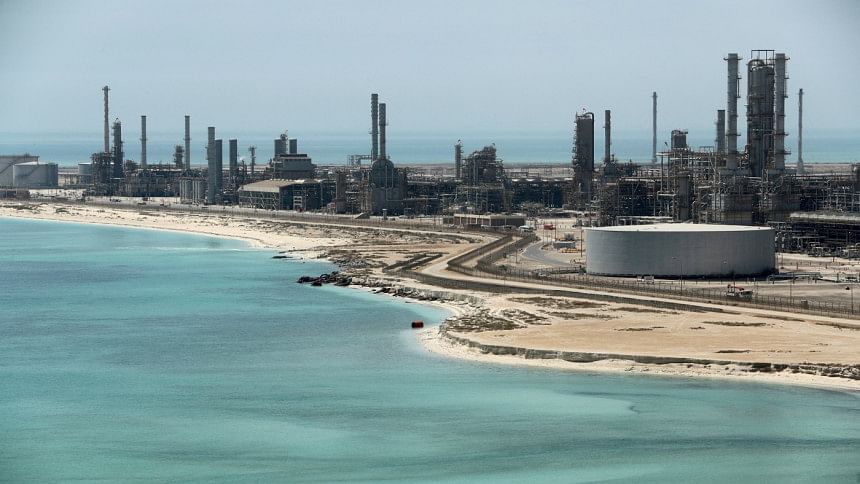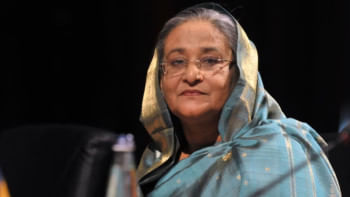Red Sea oil tension may revive Russia-Saudi spat

The Red Sea's shipping strife is spreading. Up until mid-January, the huge ships that transport 12 percent of the global oil trade by sea had largely kept crossing the Suez Canal even as attacks by Yemen's Houthi militants scared most merchant container ships away. That's now changing, in a way that may sow discord in one of the global oil market's more enduring alliances: Russia and Saudi Arabia.
As major logistics groups like Maersk , Hapag-Lloyd and Mediterranean Shipping Company (MSC) said they would reroute traffic around Africa, the daily container capacity of ships in the Red Sea and Suez Canal area had fallen to just one-third of normal levels as of January 1, according to the Kiel Institute. Since then, strikes led by the US and UK in Yemen, and Houthi counter-strikes, have prompted oil majors like Shell to reroute. The number of tankers in the canal fell over 50 percent in the week starting January 15 compared to the previous week, according to shipping data provider AXSMarine.
As with the impact of the attacks on non-oil trade, the upshot of all this on global prices is complex. Freight rates for tankers have risen by 30 percent since mid-December, but weak economic growth and a global surfeit, of oil supply over demand may also dampen the inflationary impact of a blockage. What's clearer is the impact on those exporters who are heavy users of the Suez Canal – like Russia.
Ever since the Ukraine war erupted in February 2022, cheap Russian crude oil has increasingly dominated flows headed east to China and India, the world's top oil consumers, who have not sanctioned Russian supplies. Oil shipments from Russia accounted for around 75 percent of southbound Suez Canal oil traffic in the first half of 2023, most of which were destined for India and China, according to S&P Global Ratings research.
A Russian oil tanker heading to China or India has an increasingly tricky choice. Compared to the much longer route around Africa's Cape of Good Hope, the canal charges a transit fee, yet cuts travel time by almost two weeks. While the insurance premium for tankers passing through the Gulf of Aden varies from vessel to vessel, it has risen to about 1 percent of insurable value amid the current tensions, according to AXSMarine analyst Nikolas Zannikos. For a Suezmax, the largest ship capable of transiting the Suez Canal fully loaded, that means the overall cost per barrel of oil for a typical voyage between Russia's Primorsk oil depot in the Baltic and India's Sikka port has risen to $4.24.
If the insurance premium rises to 1.8 percent – which could happen if tensions escalate further – the trip would become as expensive as the $4.74 per barrel expense of going via Africa, without factoring in higher freight or fuel costs. That means from China or India's perspective Russian oil would be later, or dearer, or both. How competitive it is not a trifling issue for Russian President Vladimir Putin – since the beginning of the Ukraine war, China has bought 63 billion euros ($69 billion) of Russian oil, while India has imported 42 billion euros, according to the Centre for Research on Energy and Clean Air.
All this may present an opportunity for Saudi Arabian Crown Prince Mohammed bin Salman (MbS), whose tankers to Asia don't need to pass via Suez. Saudi has been trying to prop up oil prices by promoting major supply cuts, creating internal frictions within the Organization of the Petroleum Exporting Countries, and "OPEC+" players like Russia with whom it has been in partnership since 2016. Selling more to the Far East would bolster finances that have been hit by Saudi's decision to shoulder much of the cuts itself.
There are already signs of a shift. Over the past six months, Russian exports accounted for about 20 percent of exports to China and India, while Saudi Arabian ones accounted for 15 percent on average, Vortexa data show. But over the past two months, Russian exports have declined to about 18 percent, while Saudi market share has increased to around 16 percent. Earlier this month, Saudi Aramco , slashed its selling prices to Asia to levels last seen in November 2021.
Any uptick in rivalry between MbS and Putin may throw OPEC unity into further doubt. A flashpoint wouldn't be without precedent. When the pandemic hit in 2020, Russia stormed out of an OPEC proposal to cut production, and a price war with Saudi Arabia ensued.
That spat led to a collapse in oil prices to as low as $20 a barrel. With Houthis stirring up the Red Sea and prices currently hovering at $80 a barrel, such an endgame is far off. But a cooling of Russia-Saudi relations may prove to be one of the 2024 Red Sea tensions' clearer legacies.

 For all latest news, follow The Daily Star's Google News channel.
For all latest news, follow The Daily Star's Google News channel. 







Comments